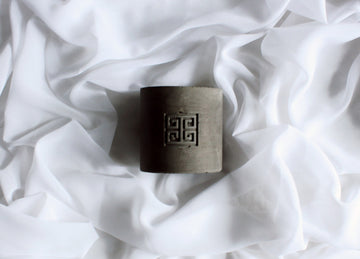Ever wondered how a scent is created? What are notes in a fragrance? And what is that “top, heart and base” you’ve come across so many times? Let’s try to answer to all these questions, as simple as we can, to get a deeper understanding of what you’re reading in a product description in order to make a selection closer to your personal preferences.
How a scent is created?
From notes to accords, to symphonies. Sounds like music, and it is. Because perfume-making is the art of making certain scent elements speak a certain melody. Once you have the right notes and a vision of what you’d like to create, it’s just a matter of conducting them to balanced accords and then blend them all together to produce a harmonious melody.
What is a fragrance accord?
A fragrane accord is the main character of a scent, and it’s that which determines the tone or the type of fragrance. It is usually a blend of 3 or 4 notes, combined carefully to produce a totally unique scent. You can see a basic list of common accords in our own “Shop by Scent” menu. These include Woody, Floral, Herbal, Fruity, Citrucy, Gourmand, Oriental, and Aquatic scent types. There are also a few more which we didn’t include for the sake of simplicity, but the above 8 cover all the scent spectrum.
What are the top notes of a fragrance
The top notes are the lightest and volatile scents in a fragrance or accord. These are the scent ingredients that first hit your nostrils and they are responsible for setting the scene for the heart that’s waiting to unfold, just a few minutes after the first impression. Top notes widely used in perfumery are Lemon, Orange, Bergamot, Grapefruit, Lime, Basil, Peppermint, Spearmint, Sage, Coriander, Petitgrain, Ginger, and Verbena.
What are the heart notes of a fragrance
As soon as the top notes evaporate, they give into the heart of the aroma. That’s where the middle or heart notes make their appearance and the fragrance is completely developed. A well-executed perfume is that which makes the transition from top to middle notes smooth and exciting. Heart notes are way too many to list, but the most common are Cardamom, Black Pepper, Marjoram, Nutmeg, Myrtle, Lavender, Melissa, Rosemary, Bay, Pine, Fennel, Cypress, Geranium, Neroli, and Jasmine.
What are the base notes of a fragrance
A fragrance without a solid foundation is just like a music piece without a baseline. It sounds bland and like it’s missing something. The melody is there, the beat is there too, but it seems…soulless. Thus, a good fragrance must have a strong base in order to hold all the notes above and to create a lasting impression. Common base notes in perfumery are Cedarwood, Sandalwood, Rosewood, Vetiver, Oakmoss, Frankincense, Myrhh, Patchouli, Rose, Vanilla, Cinnamon and Clove.






